Israel Weekly War Summary | Week #95 | July 27-August 2 ,2025
- IDSF

- Aug 4
- 9 min read
Account of the main events in the Israel-Hamas war and hostilities by the Iranian Axis
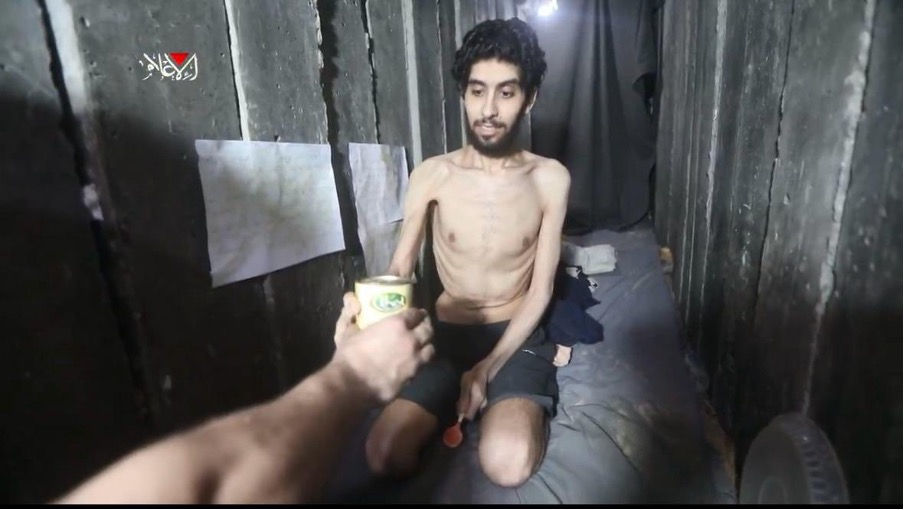
Overview
Hamas and Palestinian Islamic Jihad released disturbing videos featuring hostages Rom Breslavski and Evyatar David, both visibly emaciated and traumatized after nearly two years in captivity.
Hamas has demanded an Israeli acceptance of a Palestinian state with Jerusalem as its capital in return for releasing hostages and disarming.
Canada, Germany, and France airdropped 126 food packages into Gaza. Egypt, Jordan, and the UAE contributed another 52 food packages via air.
US envoy Steve Witkoff visited three GHF food distribution points along the Morag corridor.
Canada’s Prime Minister Mark Carney announced that Canada would join the UK and France and recognize a Palestinian state during the upcoming UN General Assembly in September. President Trump publicly condemned the recognition moves as a “reward to Hamas”.
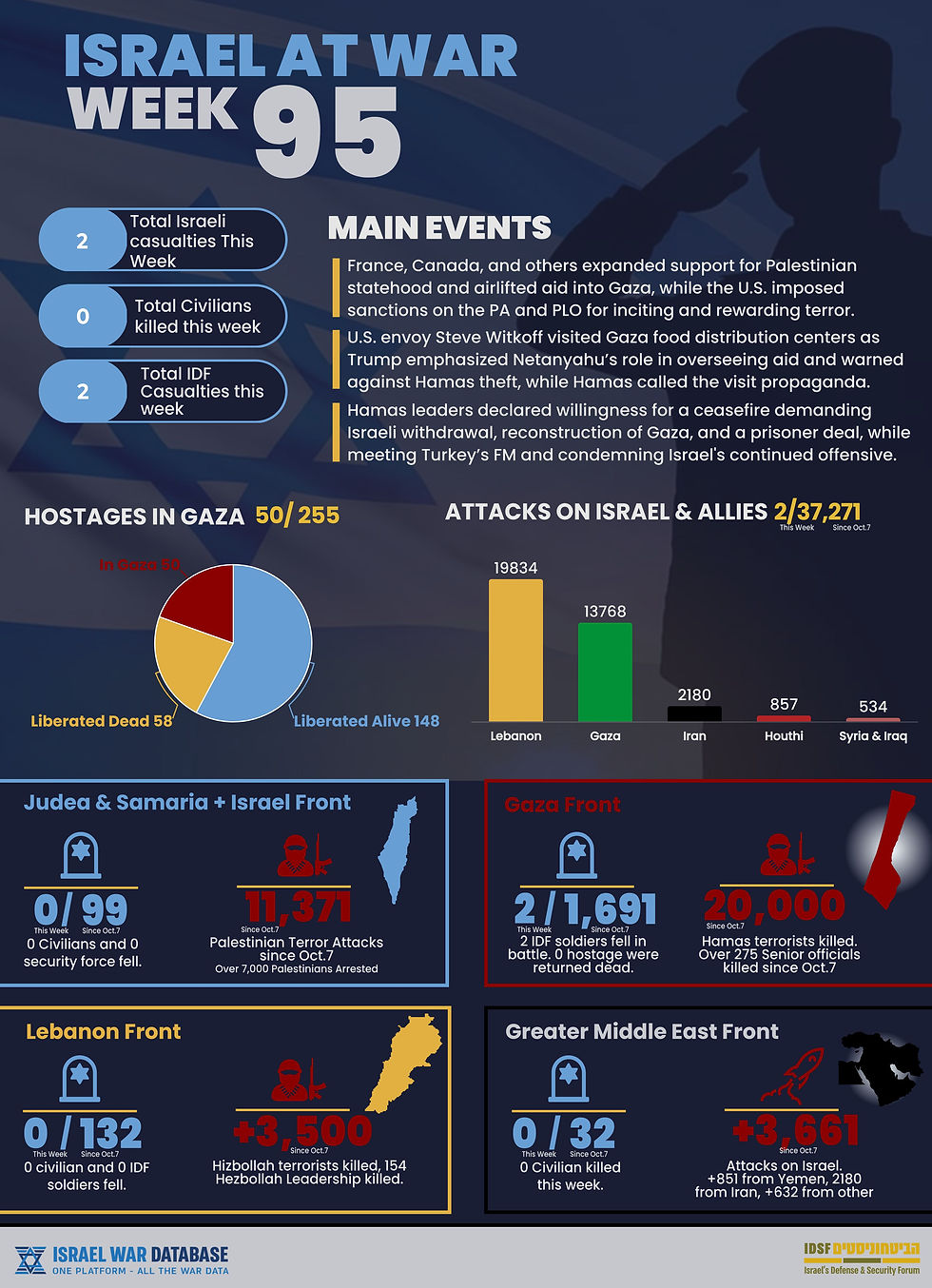
Gaza
Hostage Deal
Hamas and Palestinian Islamic Jihad released disturbing videos featuring hostages Rom Breslavski and Evyatar David, both visibly emaciated and traumatized after nearly two years in captivity. One clip shows a hostage being forced to dig his own grave in a Hamas tunnel. These actions are part of a calculated campaign to pressure Israel into a hostage deal on Hamas’s terms after Hamas saw that it can harden its positions due to the success of the starvation in Gaza campaign that it launched. As Israel is under more international pressure, Hamas capitalizes on that, in an attempt to lure Israel into a deal that would guarantee its survival.
Hamas has demanded an Israeli acceptance of a Palestinian state with Jerusalem as its capital in return for releasing hostages and disarming. This maximalist position is coupled with a belief that the ongoing humanitarian crisis will tilt international opinion in their favor and force Israeli concessions.
Israel is signaling an intention to annex a buffer zone up to 1–2 km deep inside Gaza. Control over key locations such as Beit Hanoun and Shejaiya would prevent the reconstruction of Hamas military capabilities. Annexation of even 1 km would amount to 16% of Gaza’s total area, and is presented as a coercive lever to compel Hamas toward a hostage deal before launching a possible third phase of operations.
In a strategic shift, Israel and the United States have aligned on pursuing an all-inclusive framework: no partial ceasefires or limited hostage releases. The joint position includes complete disarmament of Hamas and demilitarization of the Gaza Strip as prerequisites for any agreement.
Hamas declared it would never disarm as long as Israel exists, asserting that violent resistance is a legitimate right under international law. Their statement emphasized that only the creation of an independent Palestinian state with full sovereignty over Jerusalem would justify ending armed operations. This entrenched stance again underlines Hamas’s ideological commitment to Israel’s destruction, and the futility of negotiating partial arrangements.
Hamas Statement
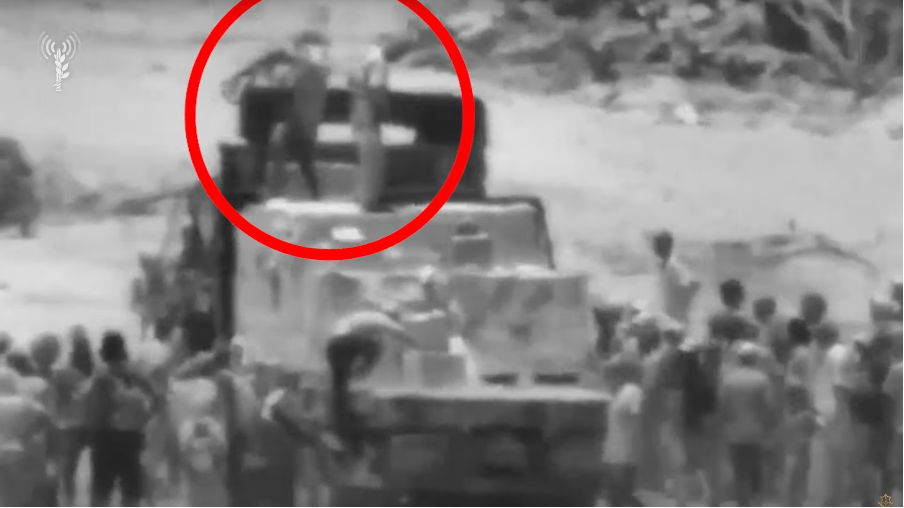
In a formal communiqué responding to international moves toward recognizing Palestinian statehood, Hamas issued a detailed ideological statement:
Palestinian resilience in Gaza is credited with “thwarting Israeli aggression” and proving the legitimacy of resistance.
Hamas views international recognition efforts as the direct result of steadfast armed struggle, rejecting any negotiation over national rights or borders.
A ceasefire deal, according to Hamas, must include complete Israeli withdrawal, prisoner release, opening of crossings, and immediate reconstruction—conditions tied to military and humanitarian demands.
The statement emphasized that ending what it terms the “genocidal war” is a moral obligation not linked to recognition or negotiations.
Armed resistance will continue until Israel’s occupation ends, the right of return is fulfilled, and a Palestinian state with Jerusalem as capital is established.
Any discussion of regional integration with Israel, Hamas asserts, is a reward for aggression, blaming Israel for all regional instability.
This document reinforces that Hamas interprets any diplomatic progress—including international recognition of a Palestinian state—as validation of its resistance strategy, thereby incentivizing further violence and radicalization.
Operational
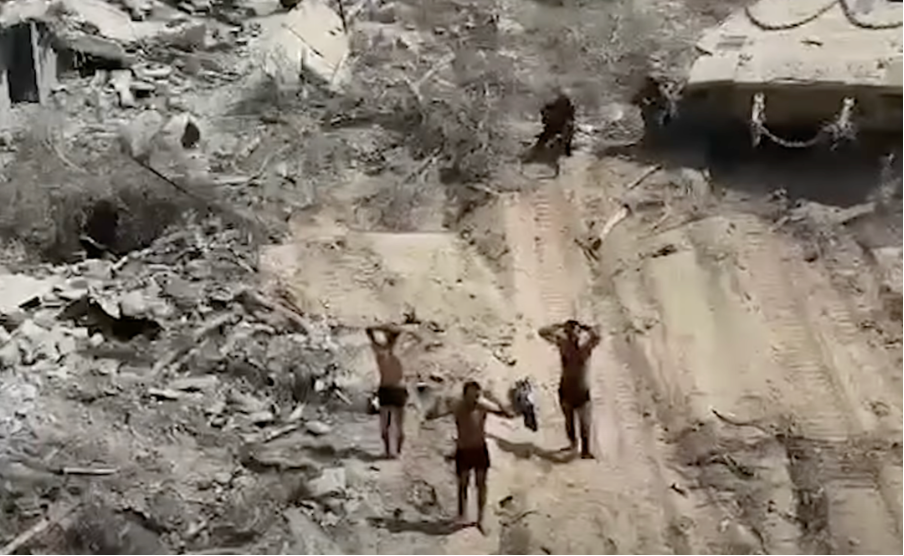
During a frontline assessment in northern Gaza, the IDF Chief of Staff , Eyal Zamir, stated that in the coming days a decision would be made: resume combat or transition to a new stage if hostages are not released.
The IDF achieved a major tactical victory by defeating Hamas’s Beit Hanoun Battalion in northern Gaza. Givati soldiers apprehended three Hamas operatives exiting a tunnel shaft after their fourth comrade was killed. The detainees revealed the location of a nearby weapons depot, including food, water, and medical supplies, designed for long-term underground sheltering.
IDF Achievements Under Operation “Gideon’s Chariots”: The IDF has cleared and secured large swaths of eastern Khan Younis, Beit Hanoun, Jabaliya, Shejaiya, and Zeitoun—once major Hamas strongholds. Remaining activity is now focused on engineering efforts to flatten terrain and eliminate final resistance pockets, facilitating future precision, intelligence-based operations. The Chief of Staff emphasized this as a shift to surgical, maneuver-based warfare.
Division 98, which destroyed over 1,500 terrorist infrastructure targets in northern Gaza, has completed its mission and withdrawn. The IDF is releasing reservists across sectors while awaiting Hamas’s formal response.
A Givati reconnaissance unit thwarted a large attack by a 12-man Hamas cell armed with RPGs, Kalashnikovs, and a drone, who had planted an IED on a route used by light armored vehicles. Although the IDF deployed a UAV, the cell escaped into tunnels, indicating the continued presence of operational networks east of the corridor. Hamas often publicizes such ambushes online, but this event, documented by the IDF, highlights deeper tunnel infrastructure still in use.
Humanitarian
On August 2, Canada, Germany, and France airdropped 126 food packages into Gaza. Egypt, Jordan, and the UAE contributed another 52 food packages via air. Over the weekend, 104 aid trucks entered on Friday and 73 on Saturday, most of which were looted by crowds upon arrival.
The IDF Arabic-language spokesperson released images showing plentiful food stockpiles in Hamas’s underground networks—UN food aid diverted for militant use, providing Hamas fighters with better nutrition than the starving civilian population. These visuals support Israel’s claim that Hamas orchestrates the famine for propaganda and revenue.
US envoy Steve Witkoff visited three GHF food distribution points along the Morag corridor to promote the joint Israeli-American initiative. The goal: convince the UN and Western donors to direct all food aid through these checkpoints rather than risk Hamas theft via unmonitored truck convoys. The GHF boasted the delivery of 100 million meals, emphasizing coordinated relief efforts.
Diplomatic
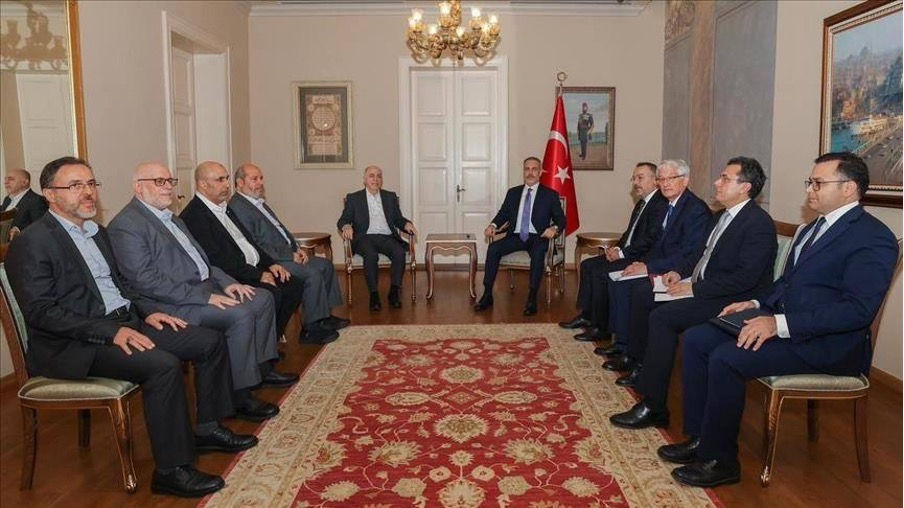
Israel and the U.S. are reportedly preparing to deliver an ultimatum to Hamas: Release all hostages, disarm Gaza, and accept a U.S.-led interim administration, or face a final decisive military campaign. Hamas has categorically rejected this and is instead rely ing on the “famine campaign” and the Franco-Saudi diplomatic initiative, to redirect pressure on Israel, which will ensure Hamas’s survival.
President Donald Trump, while acknowledging the possibility of hunger in Gaza, placed the blame squarely on Hamas, not Israel. In a joint press conference with the British Prime Minister, he underscored Hamas’s refusal to make a hostage deal.
House Speaker Mike Johnson stated that Hamas ‘earned’ $500 million in 2024 by selling stolen UN food, and called on the UN to coordinate aid exclusively with Israel.
Under growing international pressure, Egypt has begun training hundreds of Palestinian security personnel, likely from Fatah, to serve in postwar Gaza. Egypt is also pushing to relaunch permanent ceasefire negotiations, possibly signaling a new diplomatic opening.
A senior Hamas delegation led by Mohammed Darwish, Zaher Jabarin, and Khalil al-Hayya met with Turkish Foreign Minister Hakan Fidan in Istanbul.
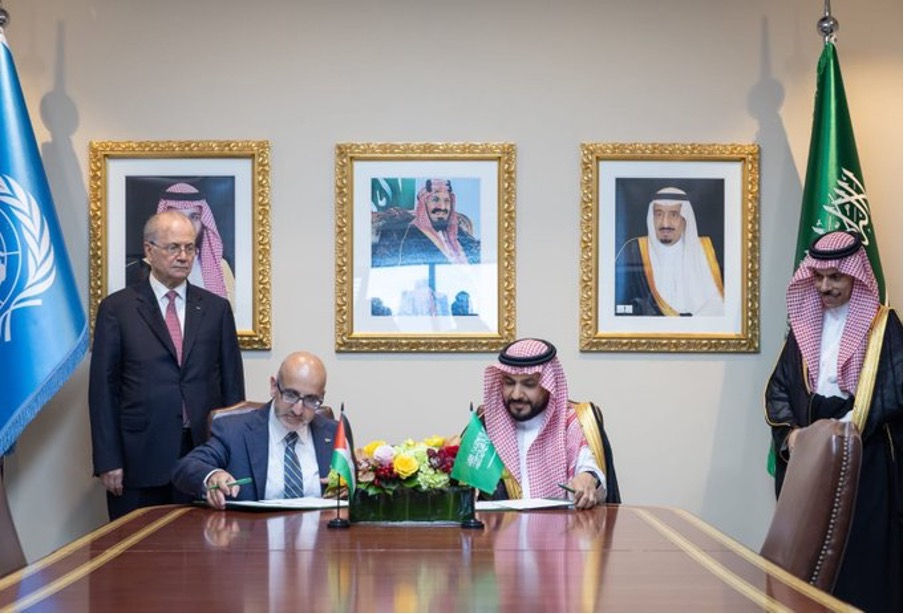
Judea and Samaria
PA Prime Minister Mohammad Mustafa met with multiple diplomats at the UN summit, including officials from Jordan, Slovenia, Brazil, and Portugal, to promote a two-state solution and bolster support for Palestinian statehood.
The U.S. State Department announced sanctions against senior members of the PLO and PA, citing:
Support and glorification of terrorism, including terror-promoting curricula,
Financial payments to terrorists’ families, and
Internationalization of the conflict through appeals to the ICC and ICJ, violating prior commitments.
Saudi Arabia signed three MOUs with the Palestinian Authority to promote economic reforms and enhance bilateral cooperation.
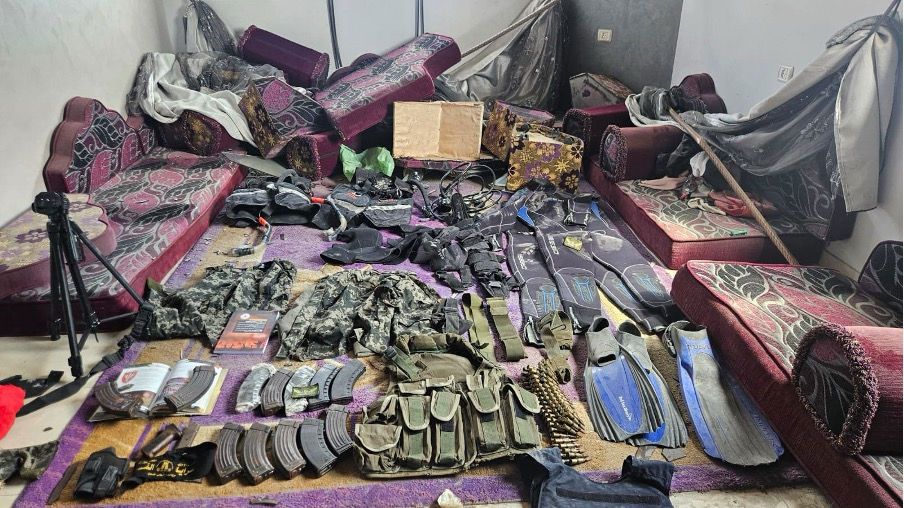
Lebanon
Diplomatic
President Aoun in a speech called for: establishing a monopoly on arms in the hands of the Lebanese Army, and dismantling Hezbollah’s armed wing.
The Lebanese Hezbollah aligned Al-Akhbar reports high-level consultations among leaders such as PM Nawaf Salam, Waleed Jumblatt, and Samir Geagea, aiming to set a timeline for Hezbollah’s disarmament.
In a memorial address, Hezbollah Deputy Secretary General Naim Qassem categorically rejected dismantlement.
Operational
On August 1, the IDF conducted 14 airstrikes in southern Lebanon and the Beqaa Valley, targeting weapon storage and production sites, including an underground missile manufacturing plant. These operations coincide with mounting internal Lebanese pressure on Hezbollah to disarm.
IDF released summary of operations to enforce the ceasefire agreement with Lebanon since November 2024:
500 Israeli airstrikes executed
230 Hezbollah operatives killed
14 targets struck in Beirut
Over 90 rocket launchers and thousands of rockets destroyed
61 reserve battalions deployed throughout the campaign
Syria
IDF spokesperson Avichay Adraee visited Druze areas in Hader, where he was warmly received. This underscores growing humanitarian and security ties, with some local voices even calling for annexation and formal protection by Israel.
Druze residents in Sweida Province held protests against the Al-Julani regime and even waved self-made Israeli flags, expressing solidarity with Israel. This follows Israeli insistence in diplomatic channels, including a recent meeting between Israeli Minister Dermer and Syria’s Foreign Minister, that southern Syria must remain demilitarized.
Israeli forces conducted an overnight operation in southern Syria, detaining suspected arms traffickers and seizing weapons, as part of Israel’s ongoing effort to disrupt Iranian and Hezbollah supply chains on Syrian soil.
Iran
Quds Force Commander Esmail Qaani held covert meetings in Baghdad with senior leaders of Iran-aligned Shiite militias, including Nouri al-Maliki, Ammar al-Hakim, Hadi al-Amiri, and Mohammad Hamoudi. These meetings focused on reinvigorating Iran’s influence in Iraq via the “Coordination Framework.”
Iran’s Foreign Minister Abbas Araghchi, in a Financial Times interview, made the following key points:
Tehran will not return to the previous status quo post-12-day conflict.
The U.S. must provide compensation before resuming nuclear talks.
Iran remains committed to the Supreme Leader’s fatwa banning nuclear weapons, framing its position as ideologically defensive rather than aggressive.
International
France and the UK announced that if the war is not concluded by the UN General Assembly in late September, they will unilaterally recognize a Palestinian state west of the Jordan River. Both nations support the March 4 Arab League initiative, calling for full reconstruction of Gaza by 2030 and the formation of a technocratic government.
Canada’s Prime Minister Mark Carney announced that Canada would recognize a Palestinian state during the upcoming UN General Assembly in September.
President Trump publicly condemned the recognition moves as a “reward to Hamas”, warning Canada that it could jeopardize ongoing U.S.-Canada trade negotiations in a Truth Social Post. Notably, Israel accepted major concessions, but Hamas rejected the deal the same day French President Macron announced his country’s recognition of Palestine. Hamas now believes it is winning the propaganda war, interpreting global recognition trends as evidence of strategic success.
Secretary of State Marco Rubio argued that these recognitions undermine ceasefire talks and embolden Hamas.
The U.S. Senate rejected two resolutions introduced by Senator Bernie Sanders to block over $675 million in arms sales to Israel. 27 Democrats voted to block assault rifle transfers, while 24 voted to block the sale of 5,000 bombs and guidance kits. This marks a historic internal rift within the party over U.S.-Israel military aid.
Somaliland reportedly offered the U.S. a military base and access to natural resources, including minerals and metals, in exchange for official recognition. There are also ongoing discussions about relocating Gazans to Somaliland as part of a long-term resettlement-for-recognition deal.
The E3 countries (France, UK, Germany) reaffirmed their readiness to activate the UN “SnapBack” sanctions mechanism if Iran does not reach a nuclear agreement by August’s end.
The French Foreign Minister called for the inclusion of ballistic missiles and Iranian proxy groups in the next nuclear framework. However, Iran’s Foreign Ministry categorically rejected this, declaring it would not negotiate over its national security.
France’s National Counterterrorism Prosecutor submitted a new request for an international arrest warrant against Bashar al-Assad, accusing him of complicity in chemical weapons attacks in Syria in 2013.



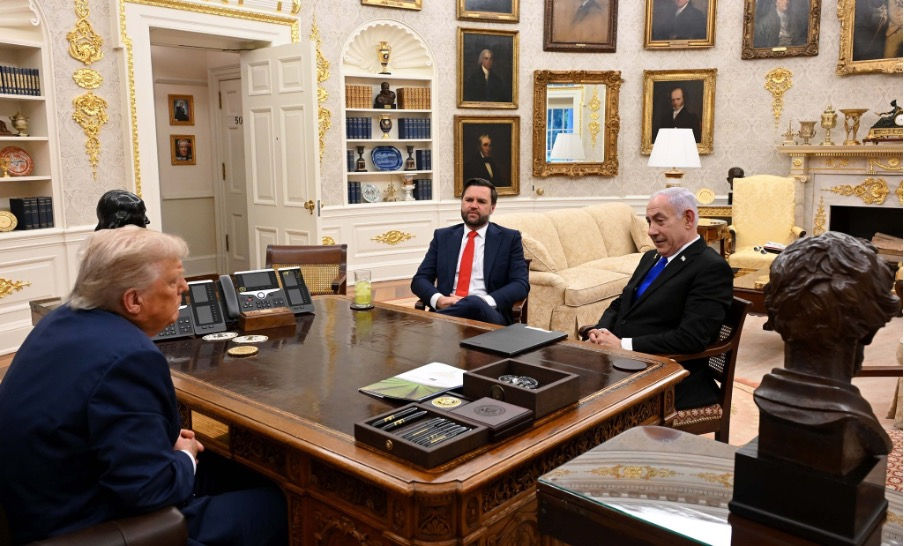
Comments